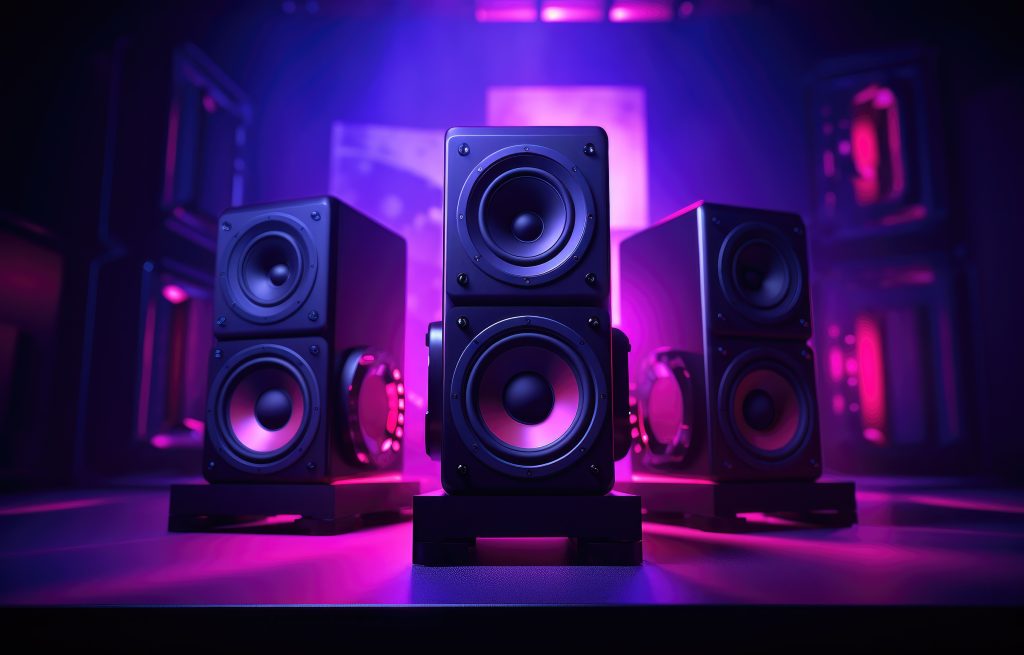When it comes to enhancing your gaming setup, the quality of your audio can make a huge difference. While many gamers focus on graphics cards, processors, and displays, audio equipment—specifically gaming speakers—deserves just as much attention. Good speakers can provide clear, powerful sound, making you feel more connected to the experience and ensuring you don’t miss any important cues or details.
In this blog post, we’ll explore the key factors to consider when selecting the best gaming speakers, from sound quality to design, and everything in between. Whether you’re looking for an upgrade or assembling your gaming rig from scratch, the right set of speakers can take your gaming experience to the next level.
1. Sound Quality: Clarity and Depth
The most important factor when selecting gaming speakers is, of course, sound quality. High-quality speakers should deliver crisp, clear sound, whether you’re hearing subtle in-game details or louder action sequences. To achieve this, consider the following:
- Frequency Response: This refers to the range of frequencies the speakers can reproduce. A wide frequency range will ensure that both the high and low sounds come through clearly. Generally, a range of 20Hz to 20kHz is ideal for most users.
- Sound Clarity: Look for speakers that provide balanced audio without distortion. You’ll want sound that remains clear at all volume levels, particularly for dialogue and subtle environmental sounds.
- Bass and Treble: While deep bass can be a lot of fun during certain moments, too much bass can overshadow other aspects of sound. A good pair of gaming speakers should provide strong bass without sacrificing treble and midrange frequencies. Some speakers also come with separate subwoofers to enhance bass performance.
Ultimately, the sound should be detailed and rich, so you can hear everything happening in your game, from background effects to directional audio cues.
2. Connectivity Options
In today’s tech landscape, there are various ways to connect your speakers to your system. Choosing the right connectivity option can affect both sound quality and convenience. Here are a few common types of connections:
- Wired (3.5mm Jack or RCA): Traditional wired speakers usually offer a reliable connection with minimal interference. The 3.5mm jack is standard, and many systems, including PCs and consoles, support this connection. RCA connectors (red and white plugs) are often found on older systems and some high-end audio equipment.
- USB: Some gaming speakers connect via USB, which can also power the speakers. USB speakers tend to be easy to set up and work well with PC setups.
- Bluetooth: Wireless options like Bluetooth provide flexibility and reduce cable clutter. However, Bluetooth speakers might not offer the same sound quality or reliability as wired options. If you opt for Bluetooth, make sure the speakers are equipped with the latest Bluetooth technology (e.g., Bluetooth 5.0) for better performance.
- Optical Audio (TOSLINK): If you’re using a console or a high-end audio system, optical audio can deliver a high-quality digital signal. It’s typically found in premium speakers and sound systems.
When choosing your gaming speakers, think about the devices you use and what kind of connection is most convenient for your setup. If you’re looking for maximum sound fidelity, wired options are typically more reliable. However, Bluetooth or USB might be a better choice if you prefer a clean, wireless setup.
3. Speaker Configuration: 2.0, 2.1, or More?
Speakers come in various configurations, and the number of speakers in your setup will impact both the sound quality and your space.
- 2.0 (Stereo): These speakers include two channels, typically a left and right speaker. This configuration is a good choice for smaller spaces or those on a budget, providing clear, directional sound for most games.
- 2.1 (Stereo + Subwoofer): A 2.1 setup includes a pair of main speakers plus a dedicated subwoofer for deeper bass. This setup is ideal for games that feature rich, low-end sounds, such as explosions or rumbling environments. The subwoofer helps add depth to the sound and ensures that bass is well-represented without distorting the overall balance.
- 5.1 or 7.1 Surround Sound: For a more advanced setup, consider a 5.1 or 7.1 speaker system. These setups include multiple speakers placed around you, providing a true surround sound experience. The added channels can create a more realistic and directional soundstage, ideal for games that use surround sound technology to provide positional audio.
The configuration you choose depends on the type of sound experience you want and how much space you have. A 2.1 system will typically take up less space and be easier to manage, while a 5.1 or 7.1 system may require more room and setup time but offers the most expansive audio.
4. Design and Aesthetics
While sound quality is paramount, the look of your gaming speakers also matters, especially if you have a well-curated setup. Many speakers are designed to look stylish and complement the aesthetic of gaming gear, with features such as:
- RGB Lighting: Some speakers come with customizable lighting options, which can add a dynamic visual element to your setup. If you enjoy color coordination, this can help tie everything together.
- Compact vs. Tower Designs: Depending on your space, you may prefer smaller, more compact speakers or larger tower speakers for a more robust sound. Tower designs tend to produce more powerful sound due to their larger size and additional drivers.
- Build Quality: Look for speakers that feel solid and durable. Materials like wood or high-quality plastic can add both to the visual appeal and the sound quality of your speakers. Wood, in particular, is known for enhancing sound clarity and producing warmer tones.
While aesthetics are important, always prioritize comfort and functionality first. Ensure the design fits with your available space and setup.
5. Price vs. Performance
Gaming speakers come in a wide range of prices, from budget-friendly options to high-end systems. While it might be tempting to go for a more affordable option, remember that you often get what you pay for in terms of audio performance and build quality.
Consider how much time you’ll spend using your speakers and whether you’re willing to invest in better sound quality. If you game often or use your speakers for other purposes like music or movies, it may be worth investing in a mid- to high-range pair. For casual users, a budget-friendly system might be sufficient.
6. Additional Features to Look For
Some gaming speakers come with extra features that can enhance your experience:
- Volume and Bass Controls: Easy-to-access controls for adjusting volume and bass can help you quickly fine-tune the sound to your liking without needing to dive into software settings.
- Wireless Subwoofers: If you’re opting for a 2.1 system, some models offer a wireless subwoofer, which can reduce cable clutter while still providing powerful bass.
- Audio Enhancement Technology: Some speakers feature built-in audio processing features such as equalizers or sound mode presets. These can help optimize sound based on the type of content you’re listening to.
Conclusion
Choosing the right gaming speakers is about finding a balance between sound quality, functionality, and design. Whether you’re looking for a simple stereo setup or an advanced surround sound experience, the best speakers for you will depend on your personal preferences and gaming habits.
Take your time to explore different options, considering factors like connectivity, sound clarity, speaker configuration, and price. A good pair of speakers can transform your gaming experience, allowing you to hear every detail and truly enjoy the full sound of your favorite games. Happy listening!

